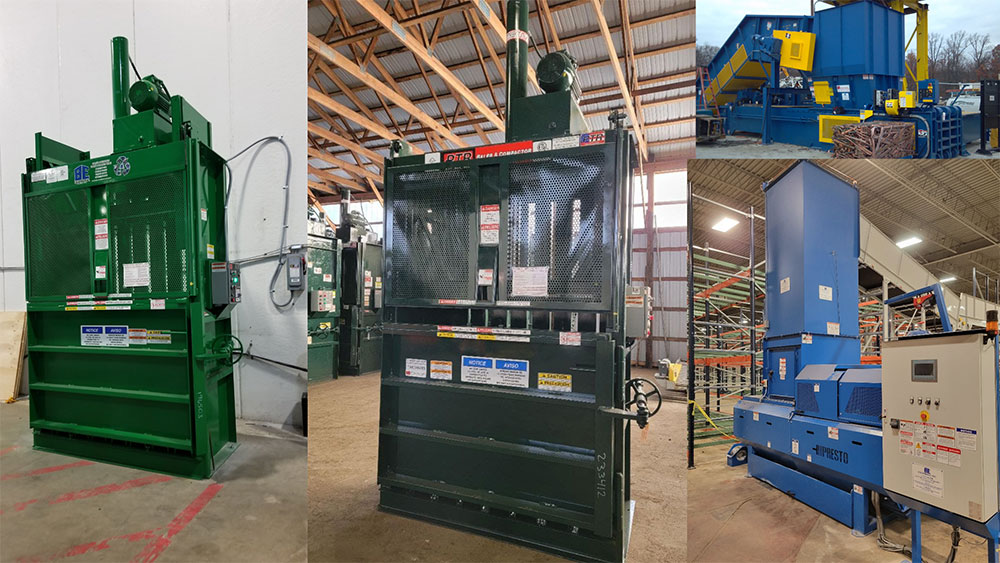Best Balers 2025: Complete Buying Guide
Types of Balers & How to Choose the One You Need: A Complete Guide
Running a business that generates large volumes of recyclable waste?
Whether it’s cardboard, plastic, foam, or metal, selecting the right baler can transform your operations by reducing waste volume, saving space, and cutting recycling costs.
Best Balers 2025: Complete Buying Guide will help you choose the most suitable baler for your needs.
1. Why a Baler Matters: Benefits You Can’t Ignore
Investing in a recycling baler isn’t just about environmental responsibility—it’s a strategic decision that pays off in efficiency. A baler compacts bulky waste into dense bundles, dramatically reducing hauling and storage requirements. These bundles lower your disposal expenses and maximize usable space in your facility.
2. Decide Based on Material Type & Volume
The balance of materials you process drives your choice.
Are you mainly baling cardboard? Plastics? Metal scraps or textiles?
Vertical balers work well for cardboard, PET plastics, and paper. High-output facilities, however, may require horizontal or two‑ram systems for faster processing and more material flexibility.
3. Vertical vs. Horizontal: What Suits Your Space & Workflow?
Vertical (Down‑Stroke) Balers
- Footprint: smaller, ideal for limited spaces or standard ceiling heights
- Investment: lower upfront cost
- Typical uses: cartons, foam, PET
- Bale sizes: usually up to 1,000 lb
- Tie method: manual or automatic wire tying
Horizontal Balers
- Design: feed from the side; can be conveyor-fed and integrated into automated systems
- Capacity: high-volume processing and larger bale output
- Ideal for: 100+ tons/month of recyclables
- Benefits: Auto tie, consistent bale weight, less labor-intensive
- Available types: closed-door or open‑end extrusion models
4. Specialized Options for Higher Throughput
Perfect for operations that need to accelerate baling with minimal labor. These systems automatically secure each bale, smoothing your workflow and improving throughput.
Two‑Ram Balers
Built for rugged, high-capacity environments, two-ram balers use one cylinder to compress material and a second to eject and tie the bale. They handle bulky, heavy materials like scrap metal, textiles, and dense plastics.
5. Matching Features to Your Needs: Considerations and What to Think About
Material Types: Cardboard, plastics, metals, textiles, foam, etc.
Waste Volume: More than 100 tons/month? Lean toward horizontal models
Footprint & Ceiling: Small footprint needs? Go vertical
Labor & Automation: Want less manual work? Choose auto-tie or horizontal
Maintenance & Spares: American-made brands often ensure faster repair access
Selecting a baler is about balancing material type, capacity, space limitations, and maintenance support.
6. Maintenance & Longevity
Once you’ve chosen your baler, a preventative maintenance routine is essential to avoid downtime. Many manufacturers offer inspection services, parts replacement, and training programs to keep operations smooth year after year.
Final Recommendations
- Small to Medium Volume (cardboard, plastics): A vertical baler—or mini-baler—offers an efficient, low-cost solution.
- Large Volume or Mixed Material Streams: A horizontal or auto-tie horizontal baler delivers higher throughput and consistent bale quality.
- Heavy-Duty Operations: Look into two‑ram balers for industrial-scale outputs and tougher materials.
By aligning your facility’s waste streams, space, and recycling goals with baler type, you can streamline operations, reduce waste, and save money, turning a recycling baler into a strategic asset.
Need help choosing a specific model or planning installation? Reach out to our team at BE Equipment, Inc., and we’ll guide your next steps.
About BE Equipment, Inc.
Since our establishment in early 1983, we have proudly emerged as one of the leading suppliers of new, used, and reconditioned recycling equipment and solid waste handling systems in the Mid-Atlantic and Northeastern regions, USA.


